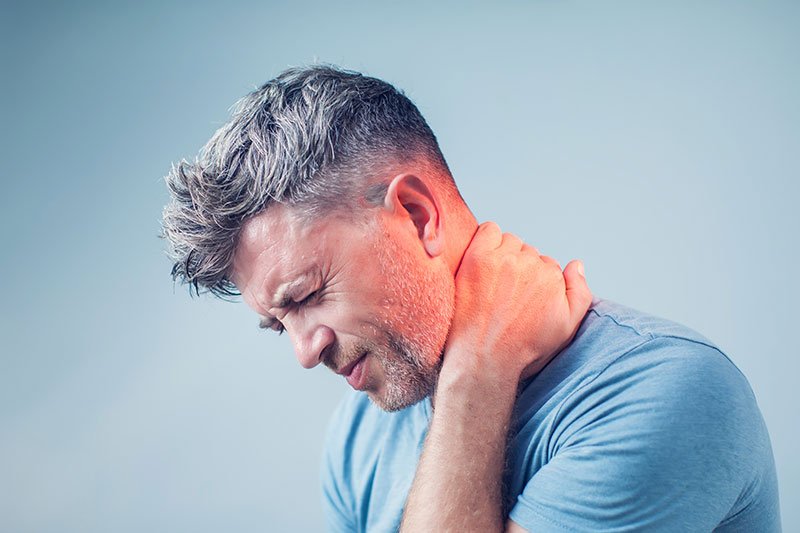
Living with any type of pain is never easy, nor is living with pain something that one would ever desire. At some point in life, we are all affected by pain. And though it doesn’t always seem like things will get better, there is always hope for a better tomorrow in spite of the pain.
Car accidents, horse accidents, accidents on the job and other traumatic experiences aren’t always things we can control. Many times, they’re inevitable and we all run the risk of possibly experiencing such a tragic event at some point.
If you’ve ever gotten in a car accident, then I’m sure you’ve heard of the term whiplash.
What is Whiplash?
Whiplash is a condition where the tissues beyond the neck muscles are bruised and oftentimes become inflamed due to the damage done in whatever type of accident has occurred.
When a blow targets the neck and causes it to go forward and back, back and then to the front or even side to side at a forceful speed, it many times leads one to then experience what’s called whiplash.
The symptoms generally don’t show up until a day or so afterward, but when they do they are typically undeniable. Seeing your local doctor will bring you a definite diagnosis, even if you believe you know you are experiencing whiplash.
X-rays and other types of medical scanning tools are unable to pick up on the damage done to the tissues in the neck, so it generally is diagnosed based on what you describe to your doctor.
How Do You Know if You Have Whiplash?
When dealing with whiplash, it’s important to know what to expect and what symptoms to look to possibly dealing with. They tend to sometimes vary in each case, but for the most part, the symptoms are all pretty much the same.
The intensity of the blow and level of force can determine just how much damage has been done, which also determines just how long the neck remains in that predicament.
So how do you know if you have whiplash? Here are some symptoms to expect:
- Headache
- Sore shoulders
- Sore arms in some cases
- Stiff neck
- Neck pain
- Irritability
- Difficulty remembering
These symptoms can last anywhere up to a couple of days, and some say they deal with the symptoms for weeks or months at a time. As stated before, each situation and case varies.
Living with Whiplash
Though whiplash is temporary, it’s important to understand how your life may change until the healing is complete. The extra level of pain in the neck, shoulders, and arms at times may bring complications to day to day activities.
Sleeping, working, and even exercising may become more difficult to engage in, but not at all impossible. There are things that can be done to help you better work through your days even when dealing with the pain and issues associated with whiplash.
1. Sleeping
Sleeping with whiplash can be complicated at times. The pressure that one takes on throughout the night can be the cause of more pain in the morning after sleeping with the pain. The neck must be free from any extra pressure in order for the stiffness to not increase by morning.
There are specially designed pillows specifically for the neck that many choose to use to help keep it in position. In some cases when it’s hard to manage on your own, you may even want to invest in a neck brace.
A temporary neck brace will help to keep the neck in place and stable, not bringing any extra pressure or jerking movements to it. Keep in mind that moving around with a neck brace and even without it will be tough because you can’t move your neck as freely as you did before whiplash.
The key is to keep the neck in a steady position throughout the night, and in the morning the pain shouldn’t worsen. Do what you can to keep the neck relaxed.
2. Working
Whether working at a desk or standing for long periods of the day, it’s important to know that whiplash may affect the way you operate. If working at a desk throughout the day, be sure to keep your neck as straight as possible but still relax as much as you can, being sure to not bring any excess stiffness to the neck. Take breaks often and don’t sit still for too long seeing that it can cause the neck to become stiffer throughout the day.
3. Exercise
During exercise with whiplash, you want to be sure you aren’t placing strain on the neck. It’s easy to strain your neck when doing abdominal exercises, chest exercises, arm, and even back exercises.
Learn the proper body mechanics regarding exercise first and then be sure to heed the breathing techniques and tucking of the chin however far you can move your head, therefore keeping the neck from being pulled on during the workout. Jerking movements must not be made and any sudden movement to the neck during exercise can worsen the side effects.
Considering the fact that shoulders and arms are many times affected also, it’s important to check with your doctor or chiropractor. Getting their opinion as to how you should exercise or if you should wait would be the best option for you.
Will Stretching My Neck Help With The Pressure?
Because the spine is also affected when the neck suffers trauma, it’s vital to not only pay attention to any extra pressure being placed on the neck but being mindful of the spine also.
Stretching many times helps the process of healing, and can assist in taking away much of the stiffness and unnecessary excess pain that forms and stays put when no movement is being done.
Sometimes, many are afraid to move the neck out of fear that it will hurt too badly or make things worse, but it’s in not moving it enough during the time of healing that will cause more pain.
There are some stretches you can perform on a daily that will help the neck with stiffness and pain. If you’re short on time don’t worry, these stretches are very time efficient.
Three Stretches That Can Be Done Under Ten Minutes
- Chin tuck – During this exercise, you can stay seated to reduce any extra pressure on the body. While keeping your head up straight and facing forward, you’ll want to slowly begin to tuck your chin down to your chest. Go as far as you can go and hold for a minimum of 5 seconds, repeating stretch 10 times.
- Side bending – In this exercise, you’ll want to stay seated with good posture. Start with your head up straight facing forward and slowly begin to tuck your ear down to one side, the goal is to get as close to the shoulder as possible, but be patient as you heal. Hold to one side for a minimum of 20 seconds, using your hand to pull on the head a little will deepen the stretch. Repeat on the other side and do this exercise 3 to 5 times on each side.
- Rotation (side to side) – While seated with a good posture hold your head up straight and face forward. Start with one side and turn your head all the way to the right or left, going slowly and aiming to look over the shoulder off to the side. Hold this stretch for at least 20 seconds, and repeat on the other side. Repeat 3 to 5 times on each side.
If you experience any new level of pain while performing these exercises, you’ll want to stop and wait. Don’t push it too far and risk causing more damage to the muscles, joints, and ligaments within the neck and surrounding areas.
Will Using Essential Oils Bring Any Relief?
Essential oils are typically derived from plants, seeds, and flowers. They are natural remedies not approved by the FDA but used by many nonetheless.
Many are beginning to embrace the use of herbal remedies and essential oils. It wouldn’t hurt to try and see if it works for you!
There are essential oils for most health issues faced today. They work well for some and for others not so much. If you choose to invest in essential oils and use them as a form of dietary supplement, be sure to pay attention to potential side effects and it won’t hurt to let your doctor know your plans.
They are generally rubbed into the body or used in diffusers.
To help with sleep at night it may be worth looking into essential oils, to help ease the pain and relax you.
Lavender, for example, is an essential oil known to calm and relax, while also helping to ease pain and inflammation. Many use it specifically for sleep.
Essential oils can be used to help with the pain but working alone they won’t bring you the best results.
Essential oils are a form of alternative medicine but should not be used alone seeing that they don’t replace traditional medications.
See a Chiropractor
Perhaps the best thing you can do is see a chiropractor. They are experienced in treating neck pain and whiplash. A local chiropractor has many secrets to treating whiplash, and the soonest you can get in, the better.








Please help I had a blackout six weeks
Back hit myl left side of head fell on my. Right side neck and back in a lot of pain right knee in pain from thigh down to knee legs feeling stiff and weak from thigh down